Fire! fire! Queensland fire brigade histories
By Simon Miller, Library Technician, State Library of Queensland | 25 September 2012
The John Oxley Library holds histories of several fire brigades around Queensland including centenary publications from the Ipswich Fire Brigade and the Bundaberg Fire Brigade and a History of the Toowoomba Fire Brigade (1877-1997) as well as an exhaustive two volume history of the Brisbane Metropolitan Fire Brigades, Brisbane on Fire : a history of firefighting 1860-1925 and Brisbane Ablaze : a history of firefighting 1921-1990.
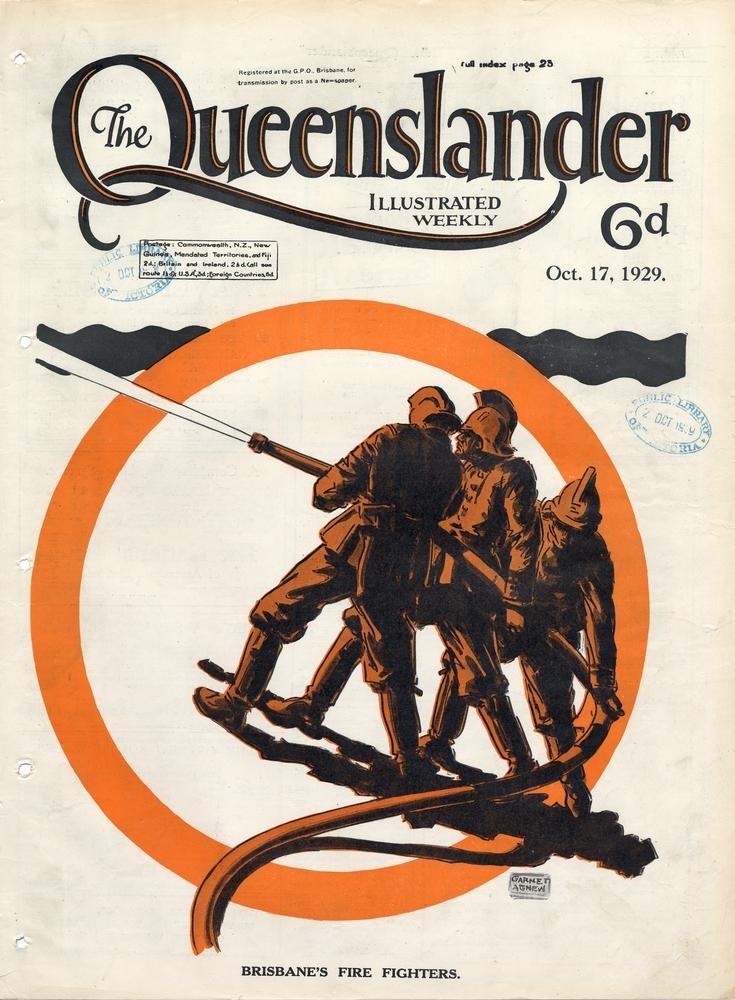
The early efforts to establish efficient fire brigades in Queensland is, as described in 'Brisbane on fire', "a story of inexperience and ineptitude, of complacency and apathy mixed with enthusiasm and heroism." During the 1860s in Brisbane no less than five volunteer fire brigades were formed and then disbanded due to lack of support and cooperation between the interested parties, namely the State and Municipal Governments and the insurance companies. This was despite the need for an efficient brigade being demonstrated by a major catastrophe that became known as The Great Fire of Brisbane that destroyed most of the businesses and dwellings in the block bound by Queen, George, Elizabeth and Albert Streets in December 1864. The Brisbane Courier was scathing in its condemnation of the authorities for their lack of action.
TERRIFIC AND DISASTROUS FIRE.
FIFTY TENEMENTS DESTROYED.
Last evening will be long remembered in the annals of Queensland, as the date on which occurred one of the most disastrous and crushing conflagrations that ever brought ruin and desolation on a town. Indeed, it would be almost impossible to convey with the pen anything like an adequate idea of the exciting and appalling scene, which certainly beggared description. At all events, the whole of the business premises and private residences which occupied what may fairly be considered the most valuable site in Brisbane, were, in a couple of hours, reduced to a heap of ruins, in spite of all that could be done by hundreds of willing and courageous men to stay the fearful progress of the devastating element. Unfortunately, although possessing the above qualifications, there was a third and most essential one wanting - that of organization, the result of previous training. However, the old saying about spilt milk is about the best consolation that can be offered to the unfortunate sufferers, many of whom, we are sorry to be compelled to record, are completely ruined. Others, who were more fortunate in having their property wholly or partially insured, have sustained a pecuniary shock which they cannot, under the most favorable circumstances, recover for some time to come. Altogether the event of last evening is of such a deplorable nature as to cast a gloom over the whole community. We should imagine that a lesson was imparted last night, the refusal to take advantage of which will be criminal in the highest degree. It is to be hoped that our civic functionaries will for once see the necessity of merging their petty differences into a determination to take such immediate steps, no matter at what cost, as will for the future prevent the recurrence of a calamity which, although greatly to be deplored is little less than might have been anticipated from the shameful apathy and neglect which has been manifested by persons in authority on the subject of the prevention of fire. A disgrace has fallen upon our city which will not be wiped out for many years.
Despite the obvious need for an effective fire service there would be several more failures before the Fifth Volunteer Fire Brigade, formed in 1868 was able to establish itself as a more permanent organisation. Volunteer brigades were also springing up in other cities. Ipswich Municipal Council was considering collecting subscriptions for the purchase of a fire engine in 1860 but the first brigade was not formed until 1865. The Toowoomba Fire Brigade was formed in 1877, subsidised by the Town Council to the tune of 20 pounds, and Bundaberg Fire Brigade was established in 1884. The organisation of fire brigades was formalized under The Fire Brigades Act of 1881.
Equipment available to these brigades was very limited. Toowoomba Fire Brigade was equipped with one hose reel, three lengths of hose, three sets key and hooks, two branches (for connecting to the water mains), 20 helmets and two hand lamps. The hose reel was pulled by men running to the fire.
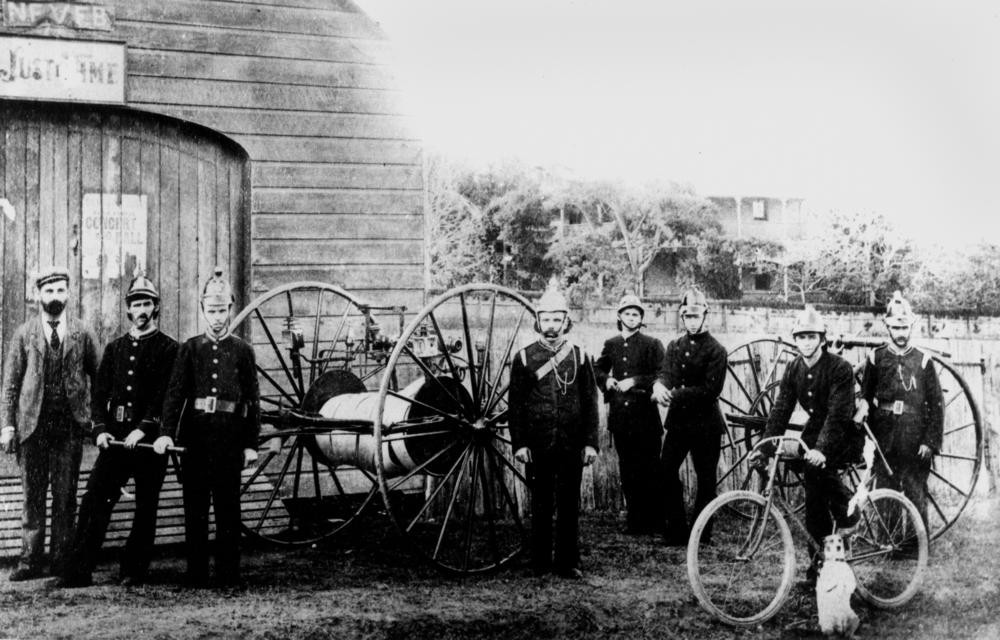
In these early days the alarm was raised by the ringing of a fire bell placed in some prominent location in the town. On hearing the bell the volunteers would rush out of their workplaces and homes and run to fetch the hose reel or to find the fire. Codes were sometimes used to give an idea of the location of the fire. There were sometimes problems with hearing the fire bell and in Toowoomba the Fire Brigade wrote to the Board in 1882 asking for the bell to be swung so that the firemen could hear it and also asked for gas lighting to be installed alongside the bell so that the bell ringer could find the ropes at night. This Toowoomba fire bell was the scene of a dreadful accident on 10 November 1886 as reported in the Brisbane Courier.
Just before 6 on Tuesday night a frightful accident occurred in the fire bell turret at Toowoomba. A volume of smoke was seen issuing from a stable at the rear of the Bank of New South Wales, and a man named John Williams, aged about 30 years, rushed to the turret to give the alarm, by ringing the firebell. The bell is the largest in the town, and weighs about half a ton. It was supported by a wrought iron bolt, running through the dome of the bell and to which was affixed the clapper. The iron bolt ran through a beam, and was bolted on the top. A ladder stood in the turret, giving access to the top of the bell. Williams stood by the side of this ladder to pull the rope. He had given but three pulls when down came the bell, first of all striking on the side of the ladder and then bounding onto William's chest, knocking him backwards against the turret fence. The bell must then have turned over and come with its full weight on the unfortunate fellow's right leg between the knee joint and the ankle.
William's leg had to be amputated and he also suffered from internal injuries but eventually recovered. He made a claim for damages of 1000 pounds but the Fire Brigade Board would not accept responsibility.
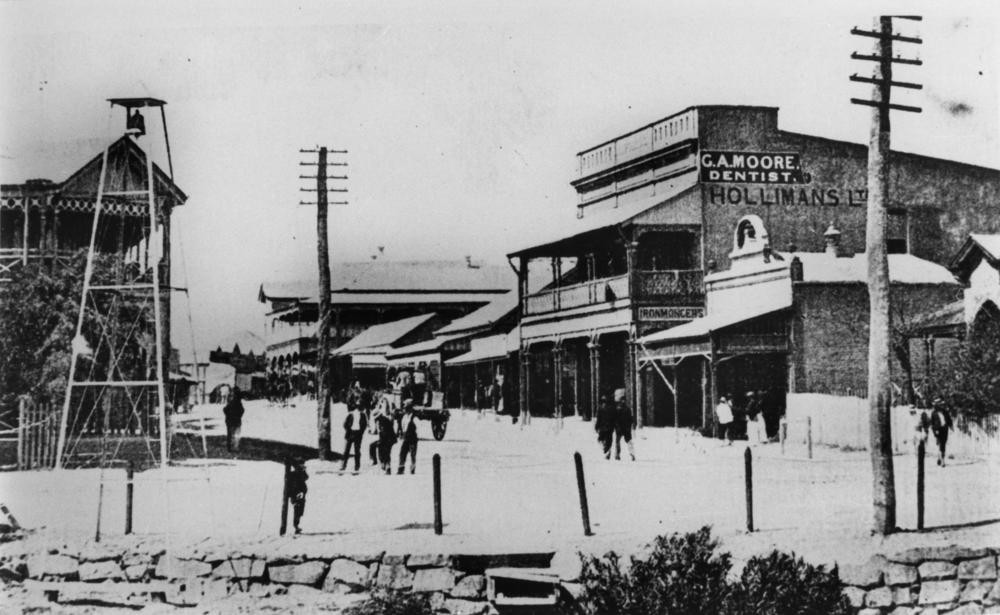
By 1882 the Brisbane Fire Brigade had acquired two horse pulled hose reels but sadly they did not have any horses. When calls were received during the day cab horses were hired to draw the reels and at night a carter was payed to stable his horse on brigade premises and paid extra if the horse was used. They purchased their first steam fire engines in 1887.
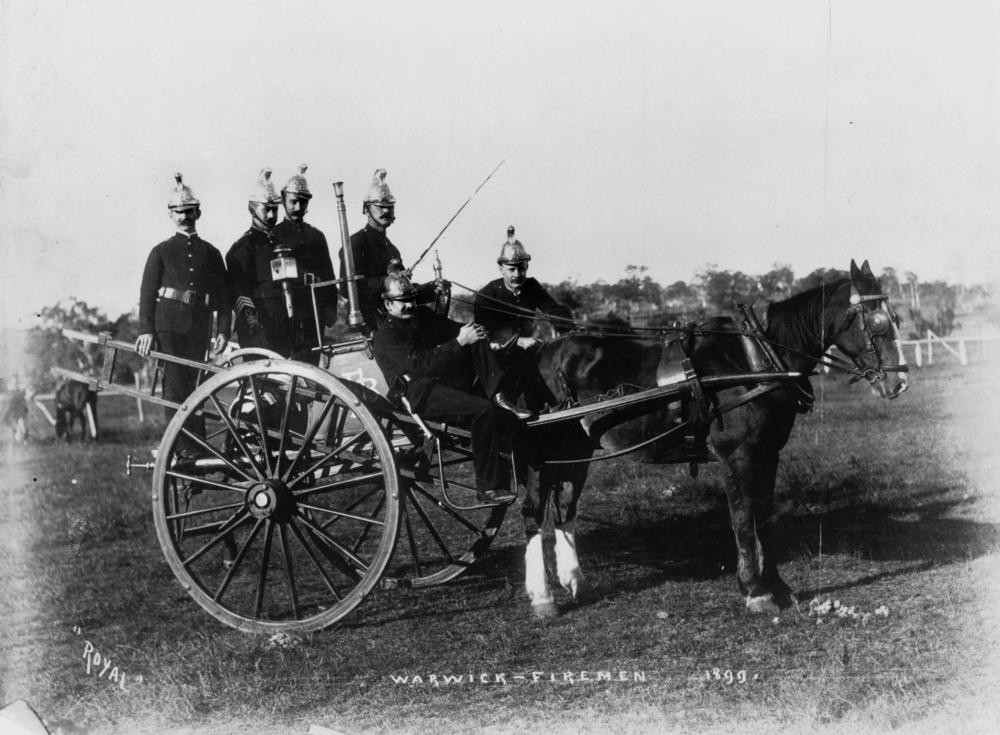
Brisbane's first motorised fire engine arrived in 1905. It's virtues are here extolled in The Queenslander.
The engine is 24 h.p., and is capable of running twenty-five miles an hour on the level. It carries eight men and 600 ft. of ordinary canvas hose, standpipes, and branch pipes, besides two chemical cylinders (each with a capacity of thirty-five gallons of liquid),and 200 ft. of chemical hose. The water in the cylinder is impregnated by bi-carbonate of soda and sulphuric acid, and is mixed instantaneously on arrival at a fire, thus generating a pressure of about 120lb. to the square inch. The fluid is then forced up the chemical hose right to the nozzle, and held there by a stop-nozzle, so that when a man reaches a fire, all he has to do is to open a tap, and this chemical fluid, which is stated to be twenty times more efficacious than water, is ejected.
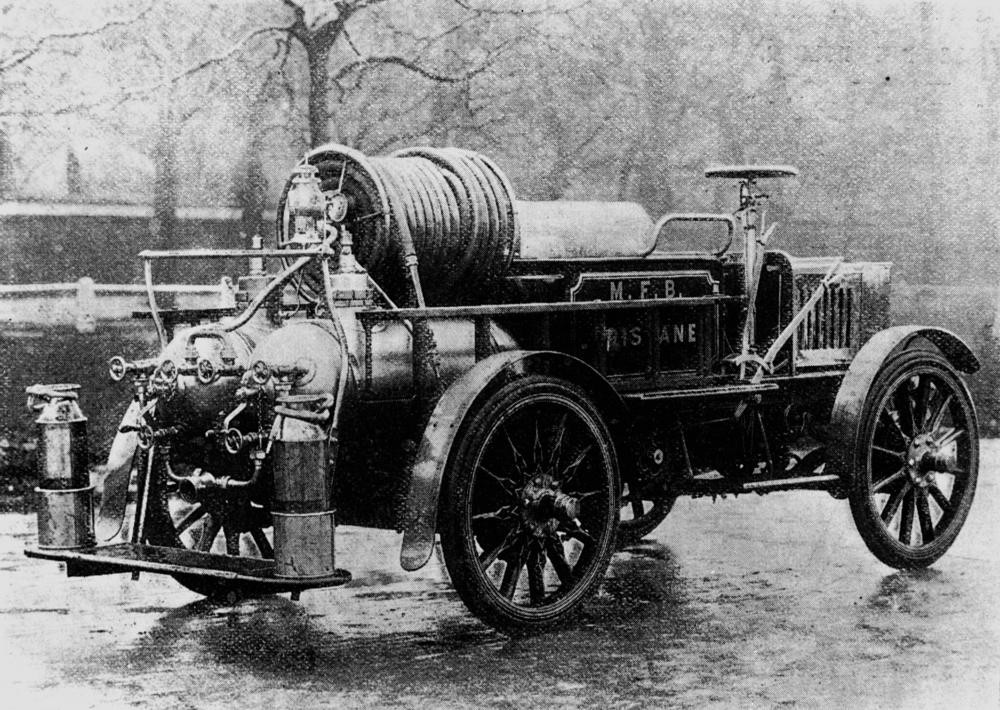
Unfortunately this engine suffered from mechanical problems and was not able to be put into service for several years. The purchase of this engine perhaps signalled the end for horse-drawn fire engines but they would still be required for some time yet. Ipswich Fire Brigade obtained a motor fire vehicle in 1908 and the Toowoomba Fire Brigade purchased their first motorised engine in 1915. This appliance did not have a pump and was used to carry men and equipment. It was so low powered that boys on bicycles were able to pass the machine.
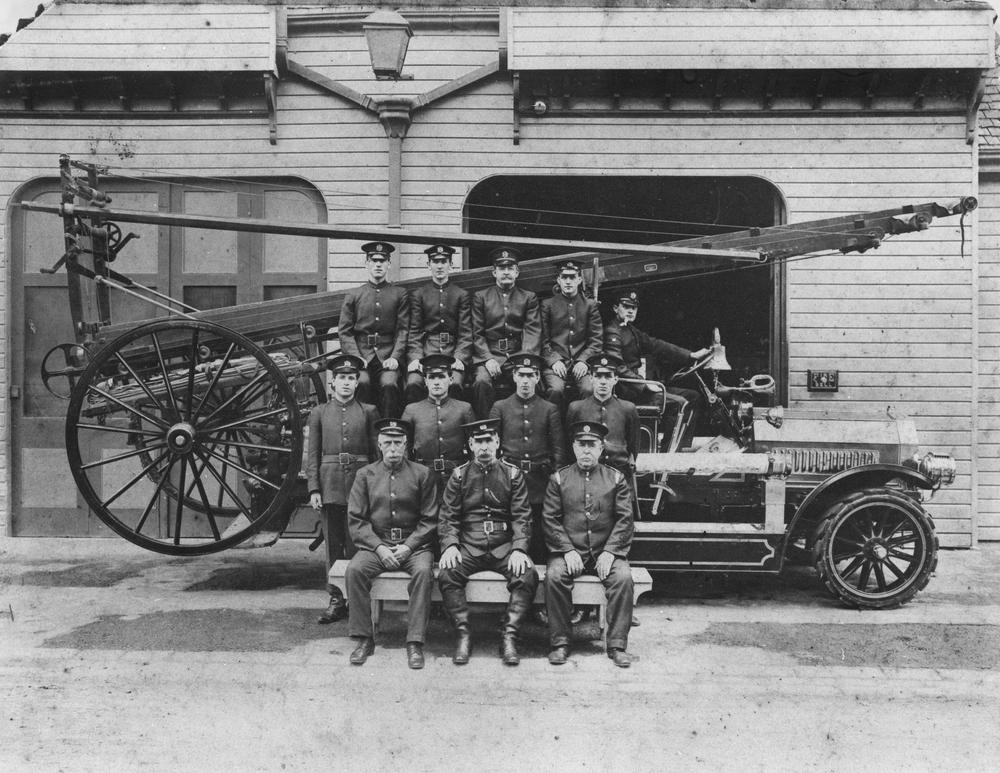
The Queensland municipal and town fire brigades continued to develop independently until they were brought together under the banner of the Queensland Fire Service (now known as the Queensland Fire and Rescue Service) in 1990. The individual boards and fire brigades ceased to exist but their proud traditions continue.


Comments
Your email address will not be published.
We welcome relevant, respectful comments.